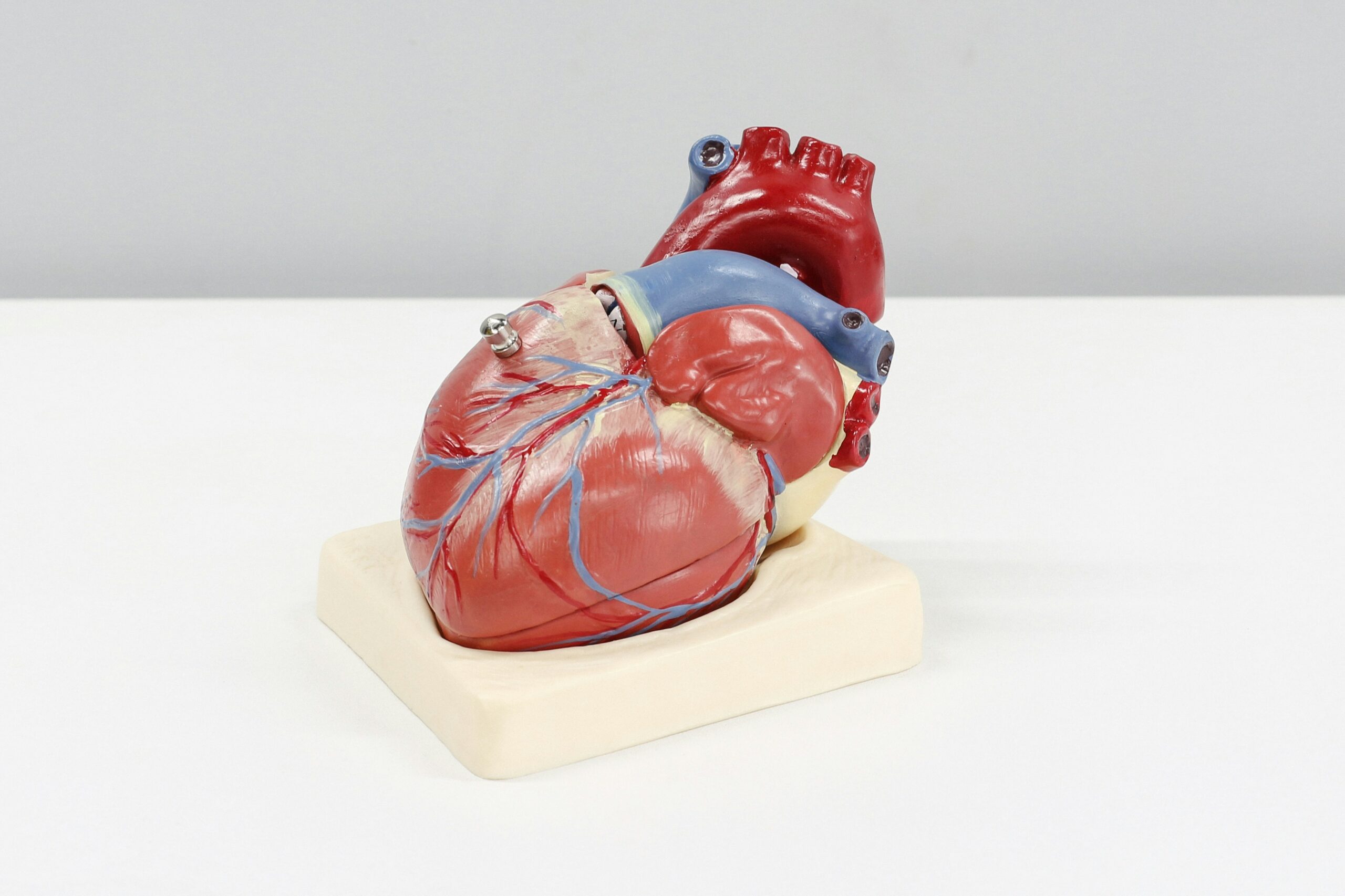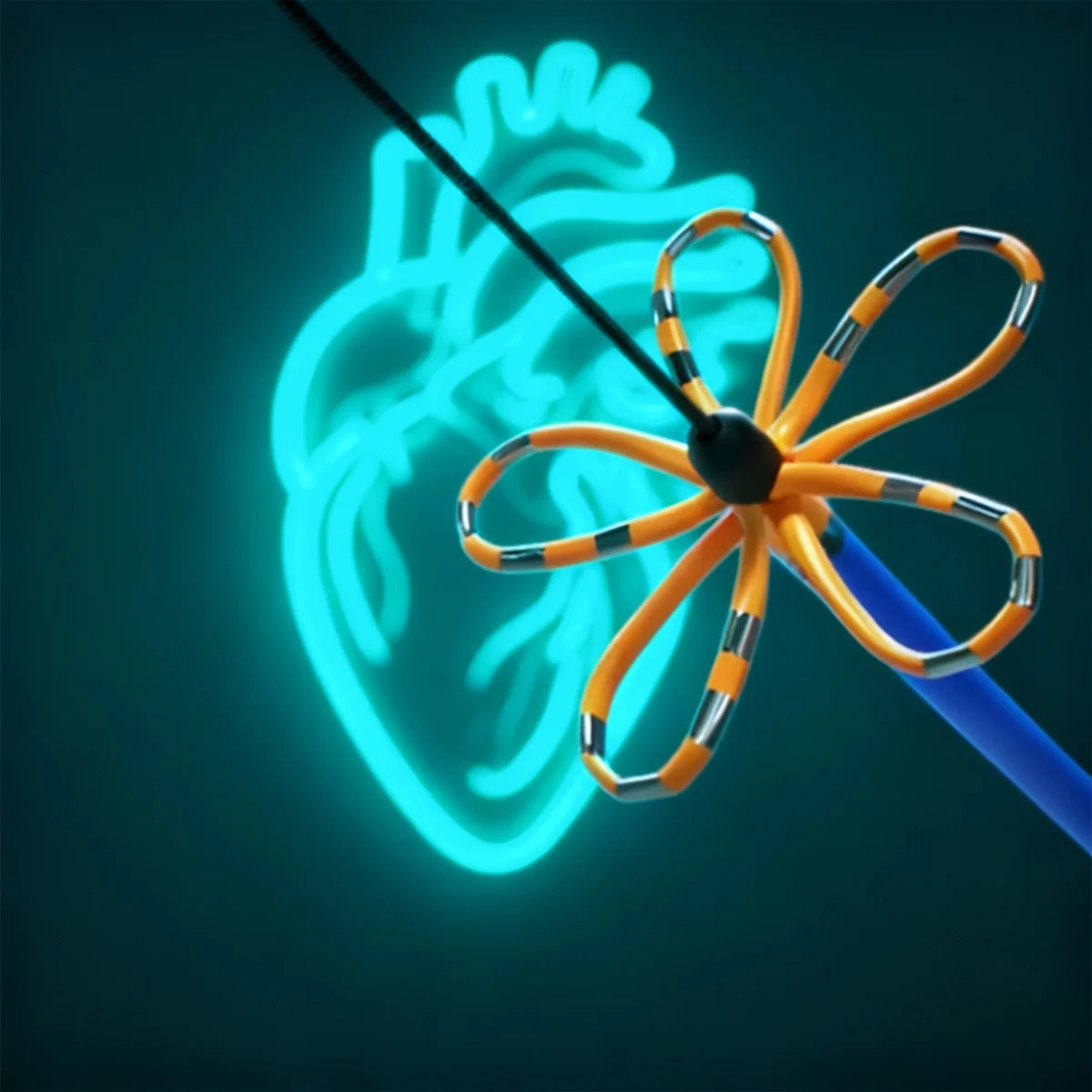Table of Contents
If you or someone you know is experiencing a heart rhythm issue, you may have come across the term “cardiac ablation” (or “heart ablation”).
Ablation is a common procedure that cardiologists use to treat rhythm problems within the heart (arrhythmias). It does this by focusing on the tiny area of tissue where faulty electrical signals cause the heart to beat in an abnormal way.
That’s the catch-all definition of ablation – but when it comes to the procedure itself, there are several different ways to perform it…
So what are the types of ablation? Here’s a brief guide from Dr Lyne, one of Ireland’s most experienced cardiologists and a leading expert in ablation treatment.
To book an appointment with him, please contact the team today.
What is cardiac ablation and who is it for?
Your heart rhythm is controlled by electrical signals travelling from the brain to the wall of the heart. These impulses prompt your heart to pump blood around the body in a regular, even way.
Sometimes, however, the pattern can be disrupted by rogue electrical signals in the heart tissue. This can cause the heart to beat in an abnormal way – too quickly, too slowly, or erratically. Ultimately, it may lead to a heart rhythm condition, the most common one being atrial fibrillation (AFib).
Cardiac ablation works by carefully scarring the tissue where the rogue signals are occurring. The scars block and isolate the faulty impulses, allowing the heart to return to a normal rhythm.
Types of cardiac ablation
When it comes to performing a heart ablation, there are broadly two approaches: using a “catheter” or with open heart surgery.
Catheter Ablation
Catheter ablation is the standard approach. It works by threading very thin, soft wires up to the heart through a vein or artery (usually in the groin). On reaching the wall of the heart, the sensitive tips of the wires can locate and then ablate (scar) the source of the faulty signals. Catheter ablation is a minimally invasive procedure. It can often be done with a local anaesthetic, and most people are able to go home the same day.
Cardiac ablation can treat a wide range of rhythm conditions in both chambers of the heart, such as atrial fibrillation, atrial flutter, supraventricular tachycardia (SVT) and ventricular tachycardia (VT). It’s sometimes used when medications or cardioversion (resetting the heart rhythm with electrical energy) aren’t working to remove the arrhythmia.
Surgical Ablation
Surgical ablation involves opening up the heart to perform the ablation procedure. It’s often carried out if you already need to have another open-heart operation, such as a valve replacement. Although surgical ablation provides the clearest access to the heart, it is significantly more invasive than a catheter procedure. It requires a general anaesthetic, and the recovery period is longer.
Radiofrequency Ablation (RFA)
Radiofrequency ablation is the most common form of ablation. It uses radiofrequency waves to generate heat energy at the tip of the catheter – similar to how a microwave oven works, but on a much smaller scale. This controlled pulse of energy creates tiny burns in the cells that are causing the electrical short circuit, removing the arrhythmia.
Cryoablation
Cryoablation is similar to RFA but uses extreme cold energy, rather than heat, for the ablation. Instead of burning the defective cells, it destroys them with a tiny frostbite. This is often done using a “cryoballoon”, which expands from the catheter tip until it touches the heart tissue. A controlled pulse of cold energy – around -40C to -60C – eliminates the faulty signals.
Pulsed-Field Ablation
Pulsed-field ablation (PFA) is a new type of ablation technology for treating atrial fibrillation. Rather than heat or cold energy, it uses high-energy electrical pulses to target the defective heart tissue. The pulses create nanometre-wide pores in the cell membrane, which disable the faulty electrical circuit. Like the thermal techniques above, pulsed-field ablation can be performed with a catheter.
Laser Ablation
Laser ablation is another relatively new type of ablation. As the name suggests, it uses a very small medical laser to create the tissue scarring. This is often done using a balloon, similar to the technique used in some cryoablations, which gently inflates near the site of the faulty signals to allow access for the laser.
Maze Procedure (Surgical)
The Maze procedure, sometimes also known as Cox Maze ablation, is an open-heart surgery to treat AFib. During this operation, the surgeon creates a “maze” of scar tissue in the heart, which blocks the faulty impulses but allows normal heartbeat signals to come through. The scars are created by cutting and then stitching the tissue back together. A less invasive version of the procedure, using a catheter, is known as “mini maze”.
Convergent Ablation – (Surgical)
Convergent ablation, as the name implies, combines two different types of ablations: a mini maze and a catheter ablation. It’s a two-stage operation, performed by a multidisciplinary team. One stage uses a catheter to ablate the pulmonary vein. The second stage involves making a small cut under the chest, then ablating the outside of the heart.
Dr Jonathan Lyne at Heart Rhythm Cardiologist offers catheter, surgical, RFA, cryo-, pulsed-field, and convergent ablation. To see which is the best option for you, get in touch for a consultation.
What’s the best type of ablation?
There are several different factors involved in choosing an ablation and why you might be recommended for one type rather than another. It really does vary from patient to patient.
Some of these factors include:
- Your underlying condition – what’s causing your irregular heartbeat in the first place?
- Your symptoms – what physical symptoms are you experiencing with the arrhythmia (if any)?
- Other issues – do you have more than one rhythm abnormality (e.g. AFib with atrial flutter)?
- Other surgery – do you need to have another heart operation (such as a bypass)?
- History – have other ablations, procedures or medicines not removed your arrhythmia?
- Arrhythmia pattern – is it constant or does it come and go? Some techniques, such as Maze or Convergent ablation, can be very effective for persistent AFib, for example.
With cardiac ablation, there’s no such thing as a one-size-fits-all solution. You need to have the right diagnostic tests to see what’s going on within your heart. A cardiology expert will then be able to review your situation in detail, take you through the potential options, and help you decide the next steps for treatment.
Cardiac Ablation with Dr. Lyne
If you’re confused or concerned about your heart – or wondering whether cardiac ablation might be right for you – we’re here to help. Dr Lyne is one of the most prominent heart rhythm specialists in Ireland, and works with ablation patients here in Dublin on a weekly basis. He was also one of the first consultants in the country to work with pulsed-field ablation when it arrived in 2023. (You can read more about that in this blog: New “pulsed energy” treatment for atrial fibrillation.)
It’s simple to book an appointment with Dr Lyne on our website. Just head to the contact page for all the details. Or you can telephone or email the team here at Heart Rhythm Cardiologist direct. We’ll be delighted to hear from you and help you take the next steps.
Types of Cardiac Ablation: FAQs
It can take as little as 15 minutes to perform some types of ablations. Other, more complex procedures can take significantly longer – sometimes three or four hours or more, in certain cases.
It depends on various factors, including your age, condition and general health. As a minimally invasive treatment, catheter ablation involves a faster recovery; most patients can return to everyday activities a week or two after the procedure. Recovering from open heart surgical ablation can take considerably longer. For more detail, see the complete guide to cardiac ablation recovery
Not always. In fact, it can often take several weeks before your symptoms settle down and the heart returns to a normal rhythm. It usually becomes clear after eight to 10 weeks if the ablation has been successful. At this point, it’s sometimes necessary to repeat the procedure or consider a different type of treatment.
It varies depending on things like: the condition/s involved, the pattern of the arrhythmia, and the type of ablation that’s being used. For some treatments – for example, catheter ablation for Wolff-Parkinson White syndrome – the success rate can be as high as 98%. In other situations, it can range from 30 to 90% depending on the patient and their heart health.
You can be. The more straightforward catheter ablations are often done with a local anaesthetic. You might simply take a sedative to help you relax while it’s happening. Sometimes you’ll need a general anaesthetic for the procedure – a maze procedure that’s being performed with open surgery, for example.






